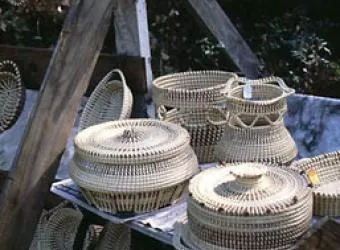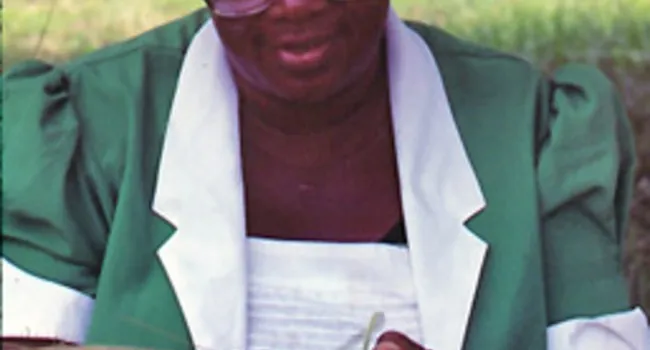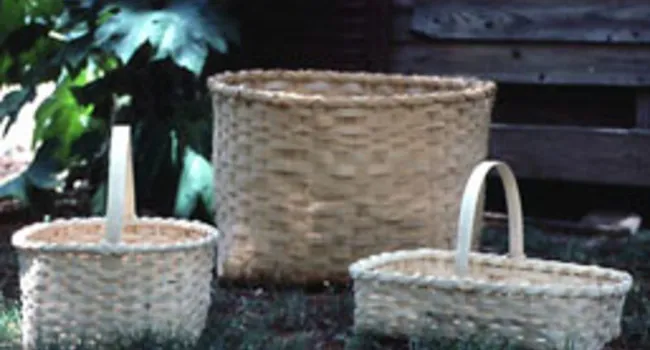
Audio
Mary Vanderhorst talks about tourism and basketmaking.
Basketmaking in South Carolina reflects the blending of Native American, European and African traditions to create two predominate types of baskets - the coiled baskets of the Lowcountry and woven baskets of the Piedmont and Blue Ridge. Native Americans used river cane to plait baskets, mats and fish traps. Europeans maintained Old World techniques and forms, adapting them to new materials like white oak to weave their harvest baskets and clothes hampers. On the coast, enslaved Africans brought their knowledge of rice production and introduced coiled basketry using local sweetgrass, bulrush, palmetto, and pine needles. Today, traditional basketmakers have adapted their forms to a changing market and most baskets are made for decorative use.
Content is provided by McKissick Museum, University of South Carolina.
For further information about any of the artists featured on Digital Traditions, send your questions and comments to hallagan@mailbox.sc.edu.

Audio
Mary Vanderhorst talks about tourism and basketmaking.
Audio
Sue Middleton talks about how she was inspired to create a new type of basket.
Audio
Mary Jane Bennett talks about the appreciation for baskets and basketmaking
Audio
Mary Vanderhorst talks about competition and how basketmakers work together.
Audio
Nathaniel Washington explains the steps in making baskets.
Audio
Franklyn De Loach shares the details on getting the wood to make split-oak baskets.
Audio
Basketmaker Marie Manigault talks about how men used to make the most baskets.
Audio
Maggie Manigault talks about how her grandfather made oak baskets.
Audio
Interviewed by Dale Rosengarten Barbara McCormick describes a decker basket.
Audio
R.C. Hagan talks about the different baskets he makes and when to use odd or even numbers of ribs.